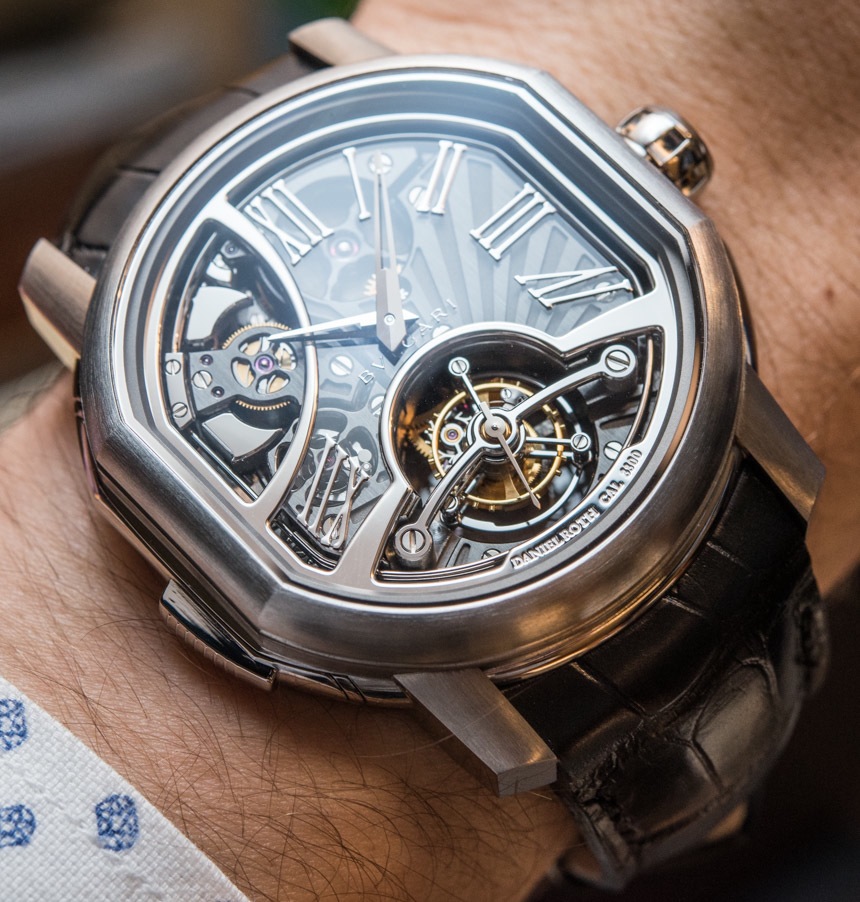
If a picture says a thousand words, then this hands-on video probably says a million. Describing a minute repeater watch in text does it about as much justice as describing Scarlett Johansson over the phone – not much, and probably not the experience you’re looking for. At Baselworld 2016, we went hands-on with and filmed four very rare and very complicated Bulgari minute repeater watches, all four cased in titanium. The four, in order of appearance in the video, are: the Bulgari Carillon Tourbillon Minute Repeater, the Bulgari Magsonic Grande Sonnerie, the Bulgari L’Ammiraglio Del Tempo, and last but not least, the Bulgari Octo Finissimo Minute Repeater.
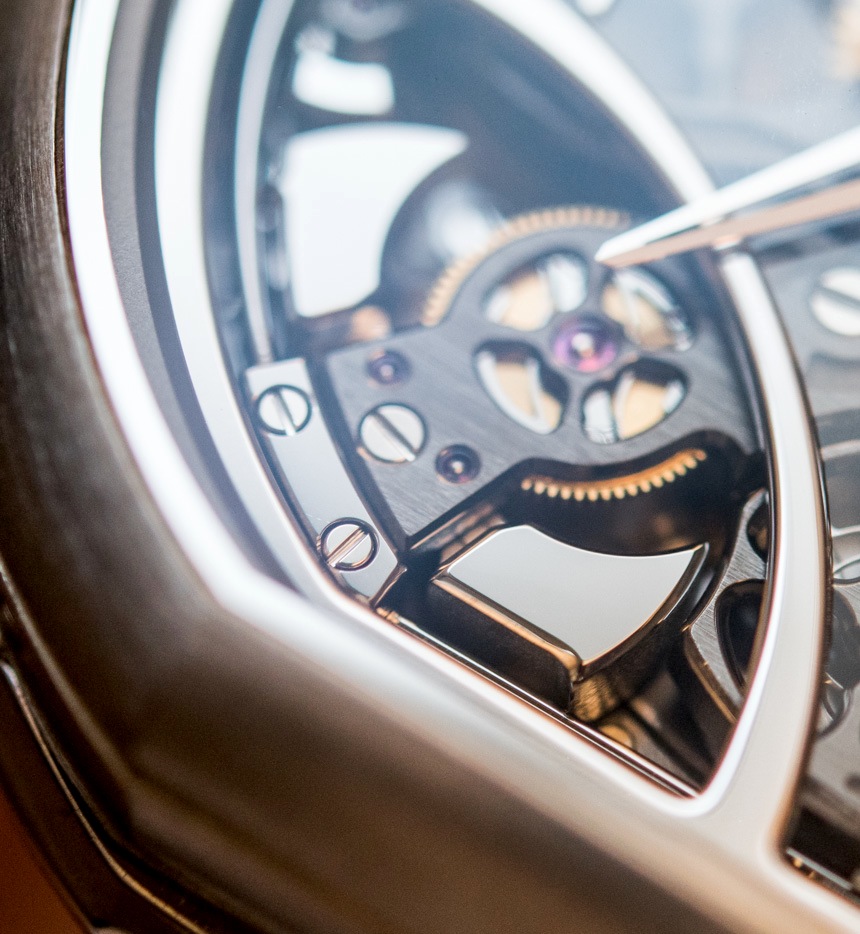
Originally designed a few hundred years ago, the repeater chiming mechanism was invented to help tell the time in the middle of the night, in the dark – before electricity or, much less, luminescent materials were available. It sure has come a long way in that time, though: today we have a choice of hour, quarter and minute repeater watches – their name tells you the smallest increment of time they can chime away, using one or more tiny hammers and gongs. Along with repeaters, we also have petite and grande sonnerie pieces – the sonnerie is what could best be described as an automated chiming mechanism, that goes off on every hour, or on every quarter.
We will let the video and its loud, clear audio (neither is particularly easy to achieve in Baselworld’s typically under-lit and noisy meeting rooms) do much of the talking. Our goal with this article is to discuss finer technical details and to show what makes these four so similar – and yet so different at the same time.
Something important to bear in mind right from the start is that, while these four pieces were all made in-house by Bulgari, they actually contain hugely different movements. Since Bulgari took over the Gerald Genta and Daniel Roth brands in 2000, they have invested heavily into bringing all that knowhow in-house and further developing on it. Hence, today, Bulgari can design, manufacture, and assemble watches as complicated and as versatile, as these four. One with over 900 components, one with a uniquely shaped three-gong and tourbillon-equipped movement, one with the singular combination of a detent escapement and a minute repeater, and last but not least, the new thinnest minute repeater in the world. All four chime, yes, but they each achieve and perform this impressive feat in their own way. Let’s dig in.
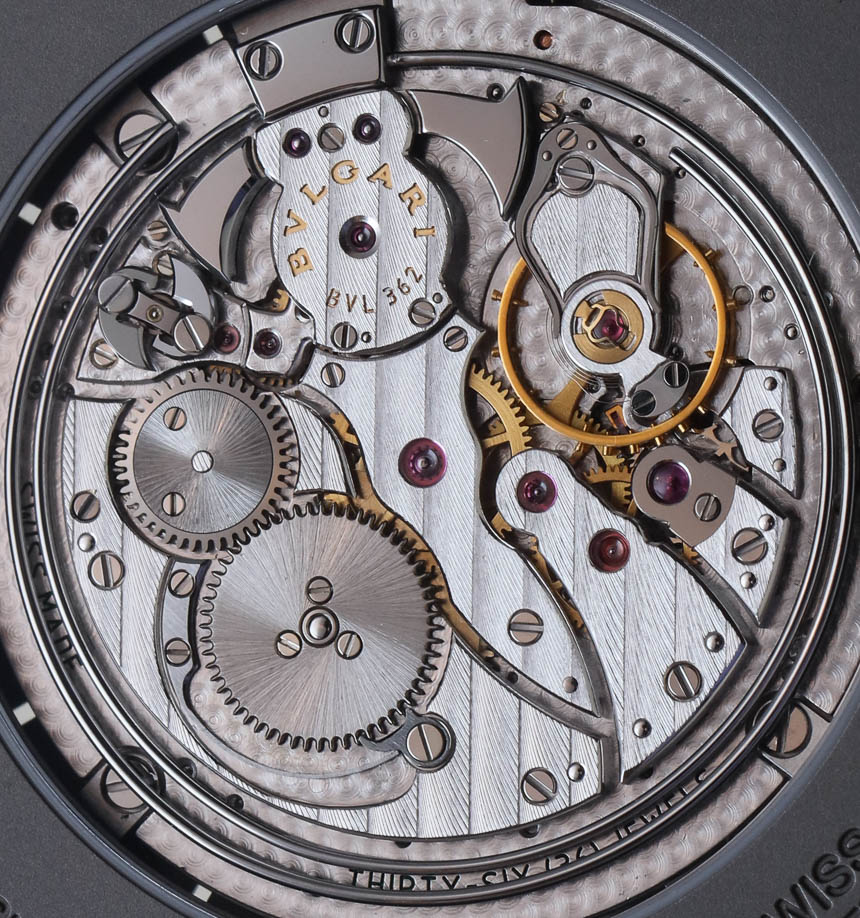
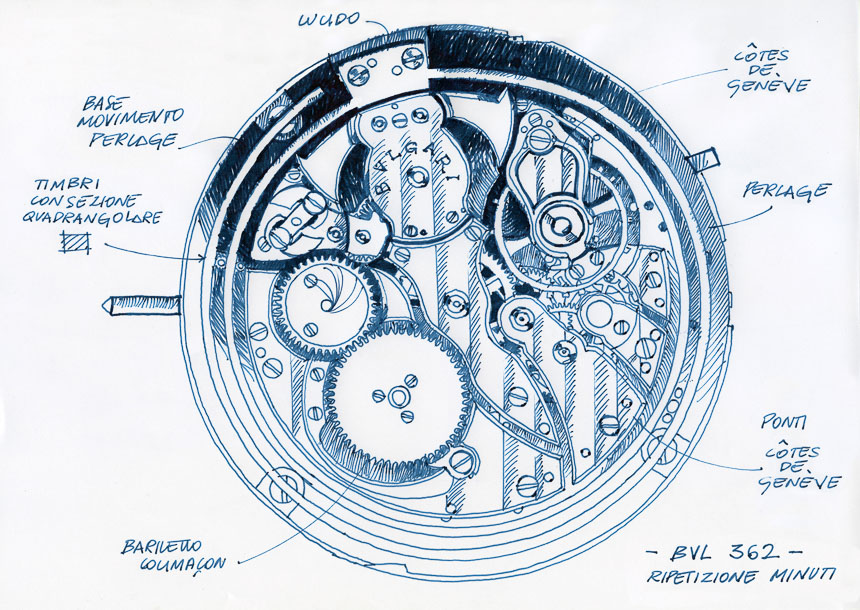
Minute repeaters are regarded by the absolute majority of master watch makers we have spoken with over the years as the single most challenging complication in wrist watches – and there are numerous solid reasons for this.
First, let’s begin with the most glaringly obvious of them all: minute repeaters are awfully complex mechanisms. Imagine overcoming the technical challenge of creating something so compact and yet so smart, a device that can run on its dedicated power source, counts in the weird system of twelve hours, four quarters and fourteen minutes, and then delivers this almost instantaneously gathered information to you – anytime, on demand.
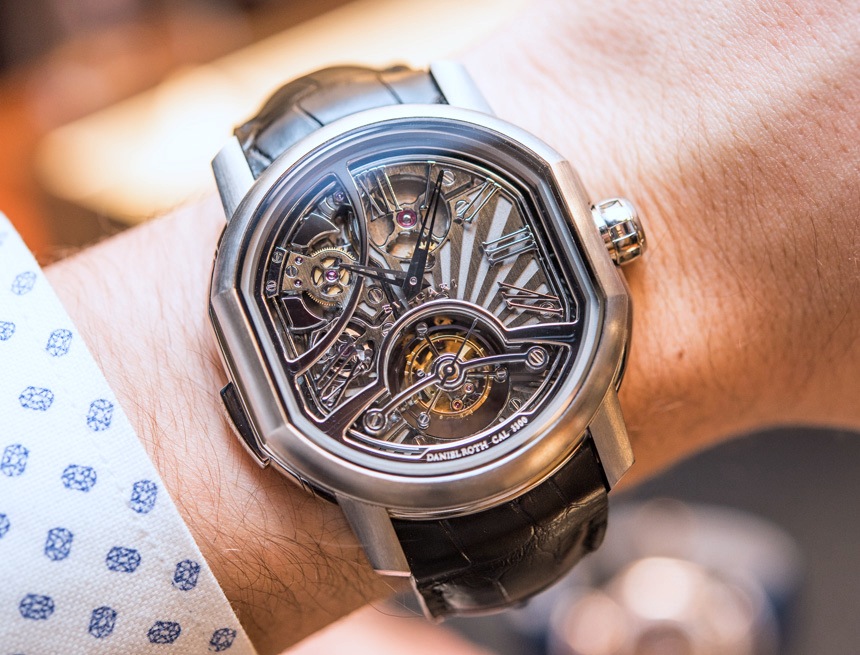
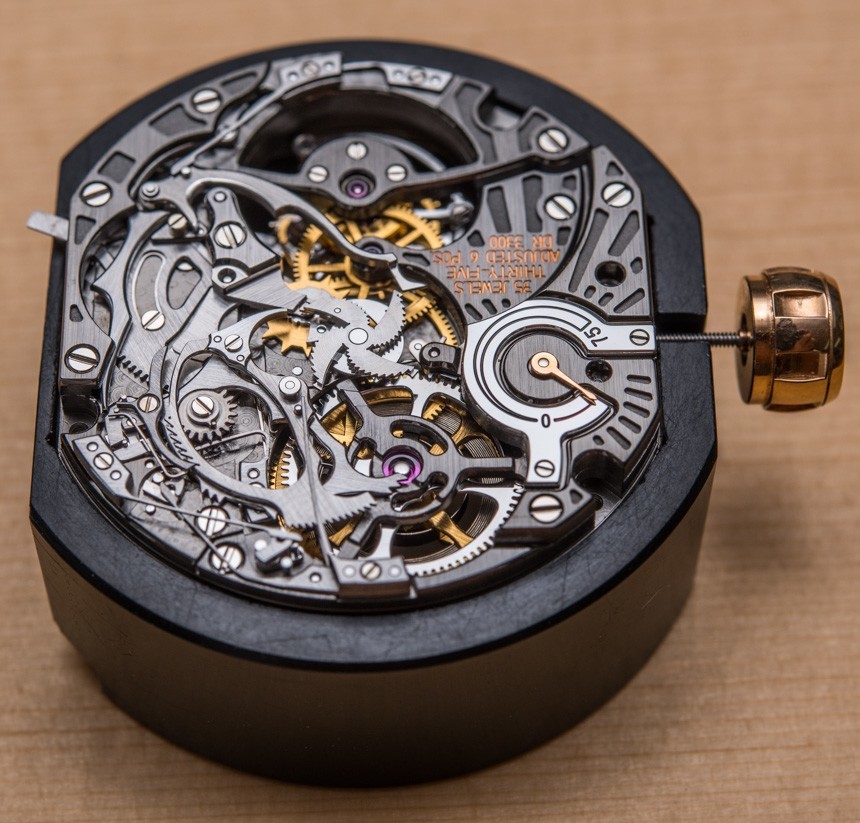
Hence, a wide range of uniquely shaped wheels, cams, and so-called snails (those long, curved components with teeth cut on some segments of them) are installed, along with the function’s dedicated little energy source – a spring, that is wound when the repeater’s slider or pusher is activated.
Second, they require a lot of tuning. Because of their inherent complexity, repeaters are finicky machines inside machines. Despite today’s extremely small manufacturing tolerances, even those of the same design never function the same way when assembled. As you can see in the video, any time the repeater function is started, a lot of movement happens inside… well, the movement. Numerous parts begin to mesh, turn, and slide, and every single tooth and weirdly shaped part has to fall into its exact desired position, or the chiming will not initiate, will not be accurate, or will be weak or not timed properly.
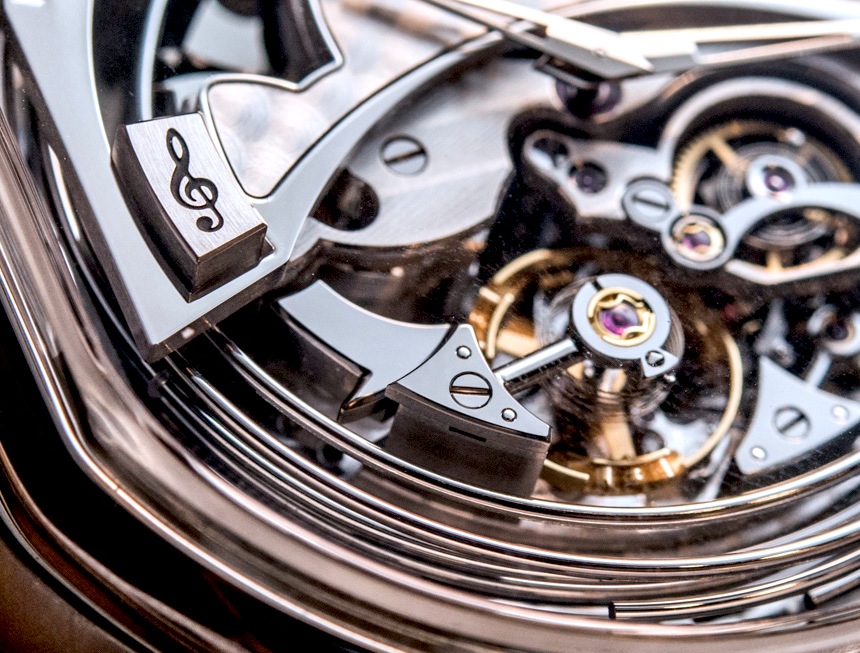
Third, they are very fragile. With so many parts moving – and always into different positions, depending on the actual time – there is so much that can go wrong. Assembling a minute repeater movement requires a master watchmaker’s expertise not because his or her colleagues couldn’t fit the pieces together, but because it requires vast experience and great knowhow to find and fix issues inside such a complex system. When a minute repeater fails, it delivers no error message on a screen – it just stops, or worse, breaks, leaving you with hours of work of disassembly, reassembly, and fixing of broken parts.
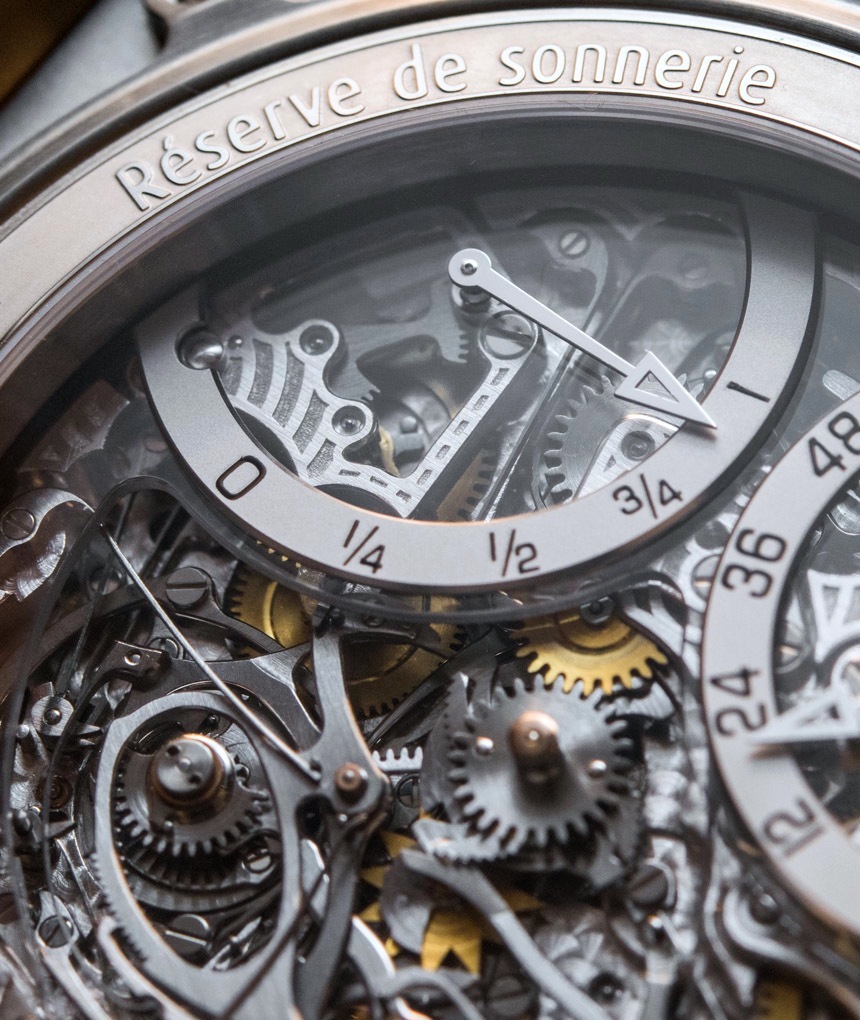
No matter which major watch show or event we attend, we always see more than a handful of complicated watches that are not at all, or only partially functional. Watchmakers and suppliers spend the last few weeks running up to these major events in a heated battle against time, trying to get these very rare and highly complex pieces to work – only for the watches to be subjected to genuinely extreme tortures, as they are operated hundreds of times over the course of a few days, and not exclusively by people who are familiar with how to handle these delicate machines.
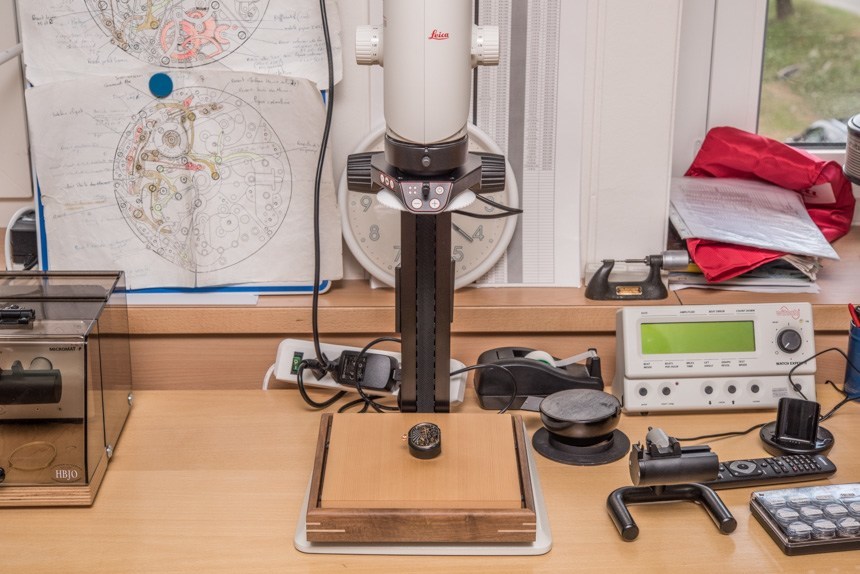
As such, the quality of the hands-on video will reveal two minor, but indeed noticeable issues in one of the four pieces on show – while the other three illustrate just how amazing a truly perfect minute repeater can be. So, what makes a minute repeater great? Well, for one, the quality of its sound and, just as importantly, the quality of the delivery, i.e., its rhythm and timing.
The first piece in the video, the Bulgari Carillon Tourbillon Minute Repeater (full hands-on article here), sounds objectively great, with a solid, well-defined sound on all three gongs. Click on the image above to see and hear just the movement, uncased, chiming away! Notably, the timing in both videos is just right, with the pauses between the notes and also between the different chimes for the hours, quarters, and minutes being uniform throughout.
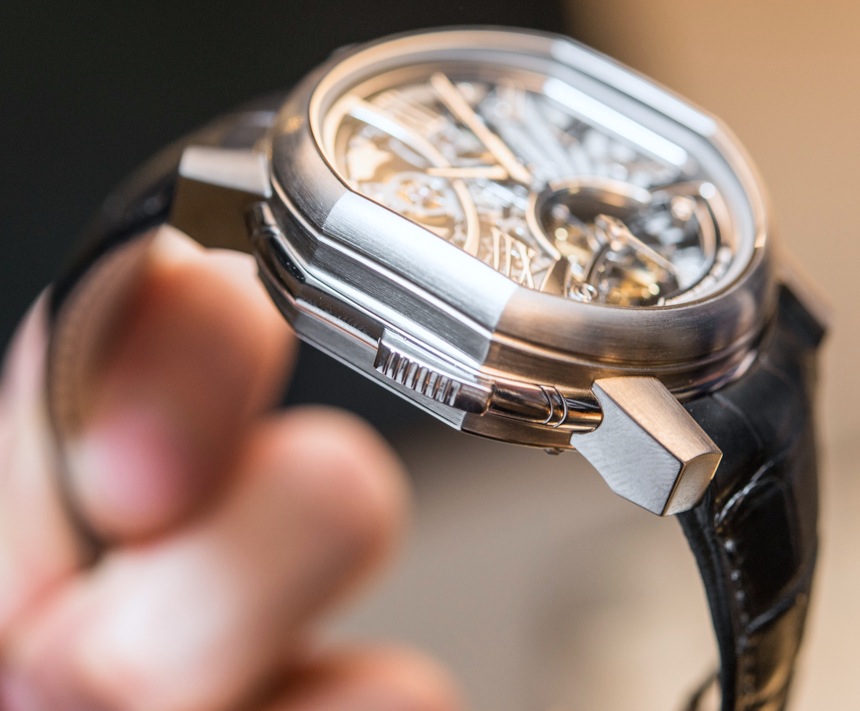
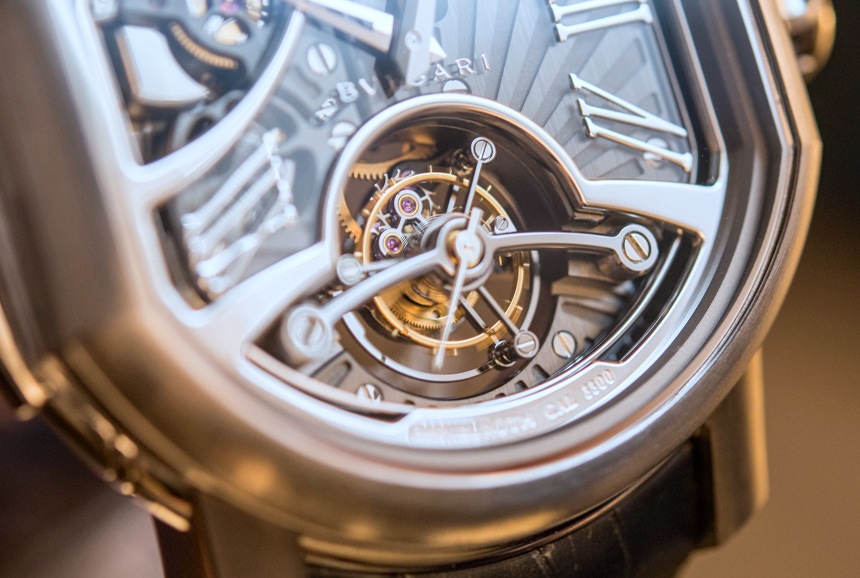
As we will see, the other three watches all have features that render them even more rare than this piece… And that is something very weird to say about an already very scarcely seen, three-hammer version of a minute repeater, here topped off with a generously sized and proudly exposed tourbillon. This Bulgari Carillon Tourbillon Minute Repeater watch has been featured in our Complicated Details In Bulgari’s Haute Horlogerie Watches article, where you can learn more about how Bulgari designs and manufactures watches of such complexity – but now, we must move on to the other three pieces that we featured in our video.
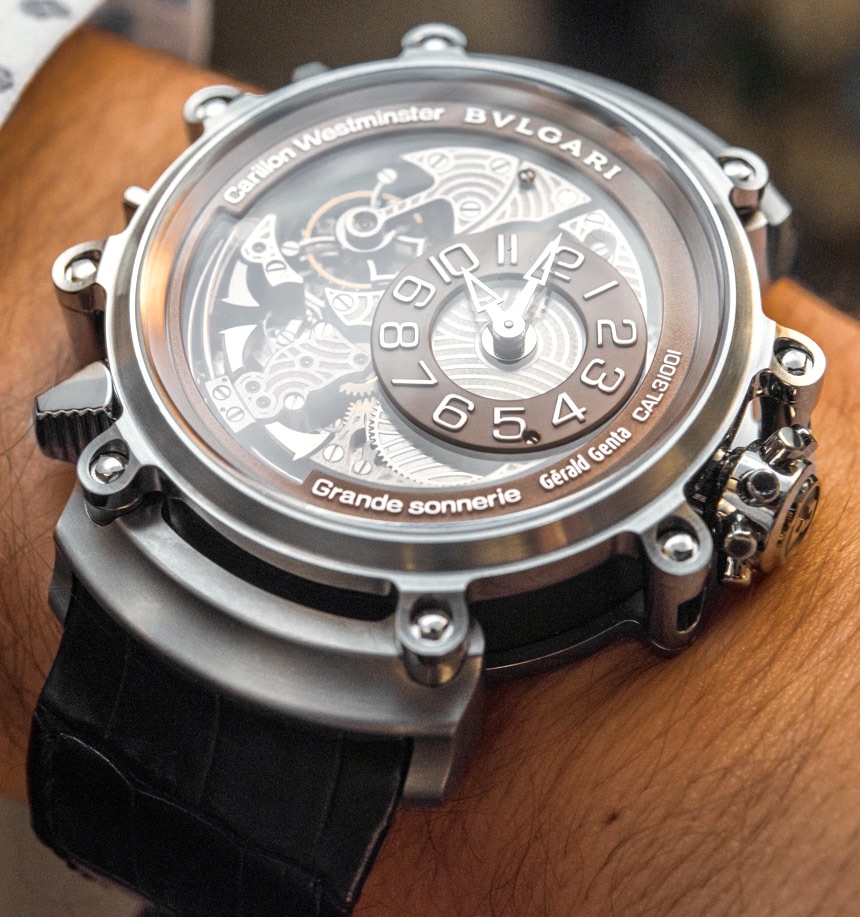
The second piece, the Bulgari Magsonic Grande Sonnerie (hands-on here), is one that we are told has been traveling the world for over a year now, from one exhibition and demo to the next – and, frankly, that has noticeably affected its performance. With over 900 components inside its carillon Westminster-chiming, four-gong movement, this grande sonnerie piece would require an overhaul that would likely take not a few weeks, but a few months, to perform.
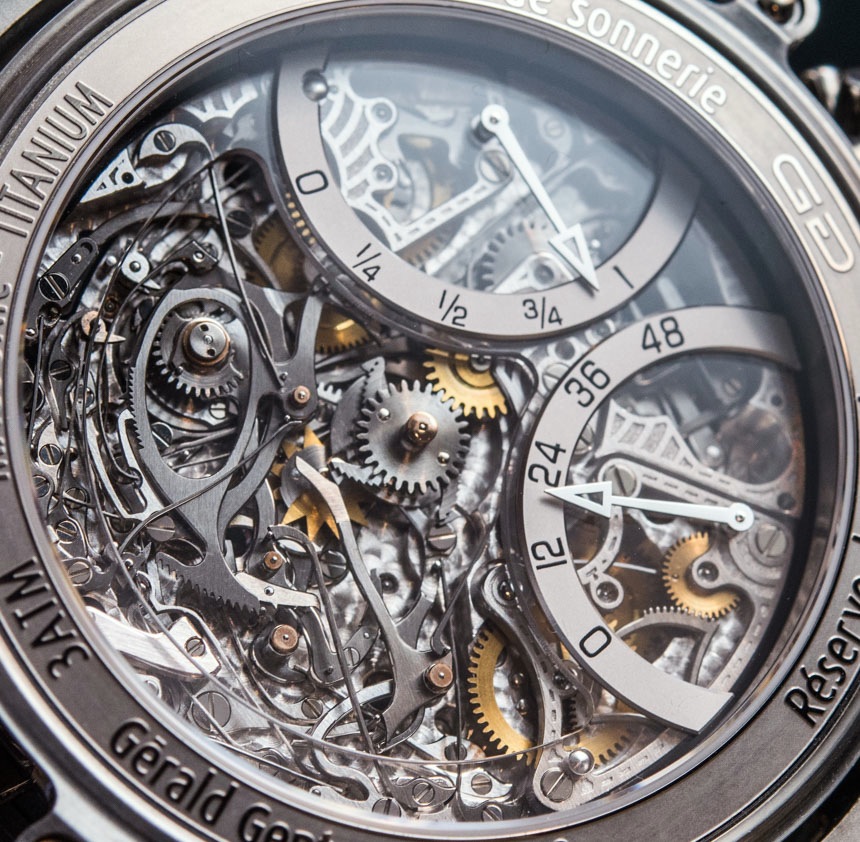
The two issues that need fixing are the sound of the hour gong and the timing of the minute chime following the quarters. The hour gong and hammer need adjustment to recover the original, solid sound, while the geometrics of the minute chime’s components also need some tinkering with to allow for a bit longer of a pause, after the band of four gongs have finished their rather amazing performance on marking the quarters.
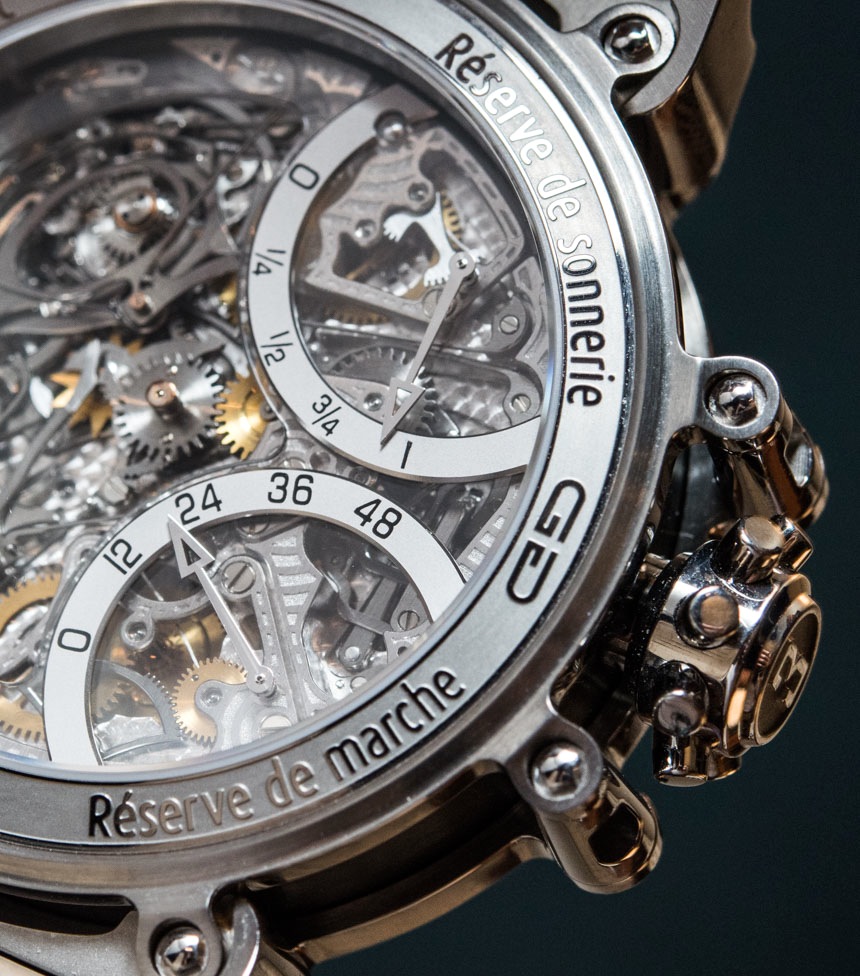
The Bulgari Magsonic Grande Sonnerie, as its name tells, is not merely a complex four-gong minute repeater, but a grande sonnerie as well. This means, that its GG 31001 caliber will automatically chime after every quarter-hour and every hour – a function that can be turned off, of course, and that has its own power reserve of 24 hours, replenished via turning the crown.
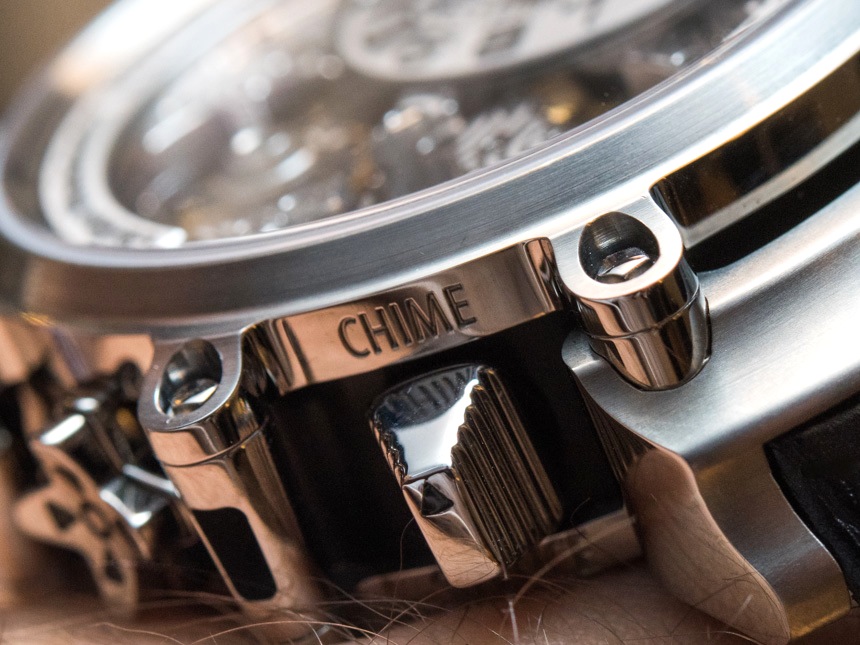
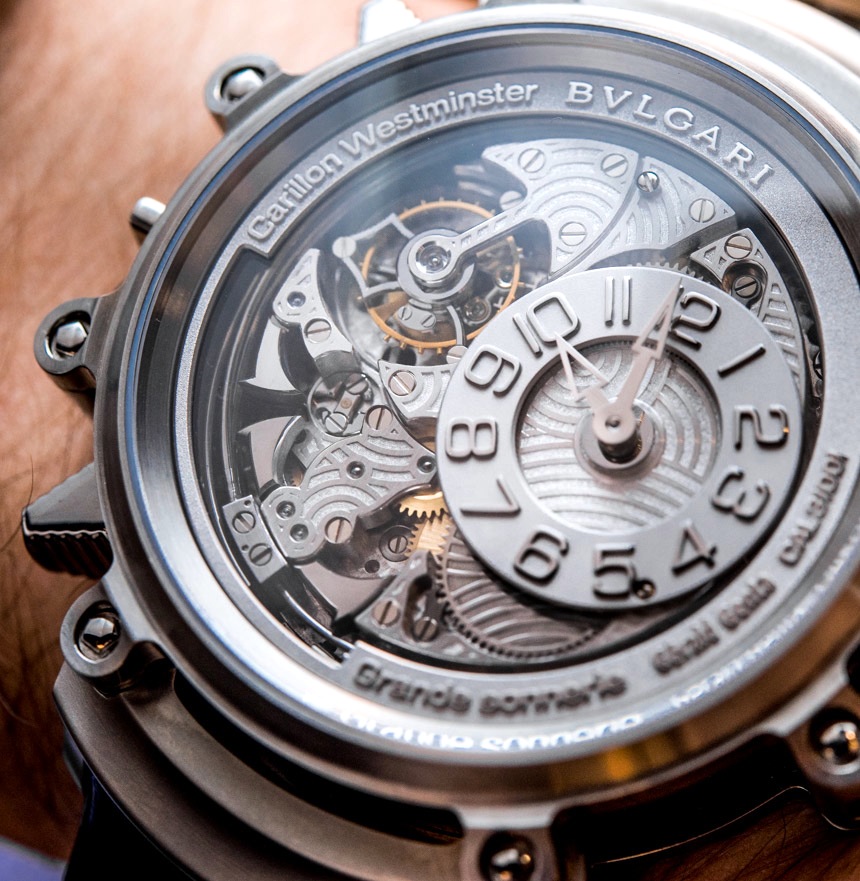
Another unique treat is the pushpiece, set into the left side of the case, used to initiate the minute repeater on demand. While the sliders on the absolute majority of minute repeaters have to travel a long way to fully wind the repeater’s power source, the Bulgari Magsonic Grande Sonnerie does away with that by employing a snappy pusher – this is because the repeater runs off of the sonnerie’s extensive and separate power reserve, so no winding actually happens when the button is pressed.
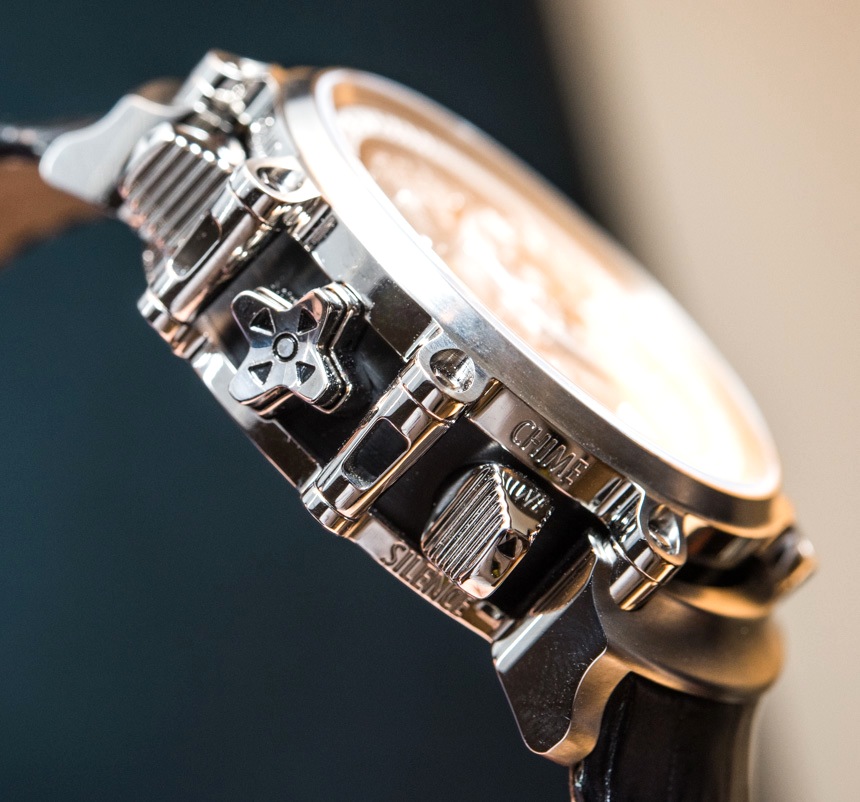

All in all, the 51-millimeter-wide Bulgari Magsonic Grande Sonnerie case, here in titanium, encapsulates a remarkably complex movement, even by chiming watch standards, with hundreds of overlapping parts and even some sapphire panes on show – see that in the image above? – both on the front and back.
